Development teams are expected to move faster than ever, but speed alone doesn’t guarantee success. Without alignment, progress stalls, and when plans are too rigid, they often collapse under the weight of shifting priorities or market changes. The way a team works day to day is what determines whether products ship smoothly or get stuck along the way.
That’s why choosing the right development methodology is such an important decision. Scrum and Waterfall represent two very different approaches: one emphasizes adaptive, iterative cycles while the other relies on structured, sequential planning. Each has clear strengths, but they also come with trade-offs that affect collaboration, flexibility, and delivery.
This article takes a closer look at both methodologies, outlining their advantages, challenges, and best-fit scenarios so you can decide which approach will set your project up for success in 2025.
Key takeaways
- Choose based on your project needs: use Scrum for complex, evolving projects where requirements change. Use Waterfall when requirements are fixed and well-defined upfront.
- Scrum delivers value faster: teams ship working features every one to four weeks instead of waiting months, reducing risk and generating earlier returns on investment.
- monday dev adapts to any methodology: create custom workflows for Scrum sprints or Waterfall phases while keeping engineering and business teams aligned with real-time visibility.
- Hybrid approaches work for many organizations: combine Waterfall planning with Scrum development to balance governance requirements with team flexibility and speed.
- Team capabilities matter more than methodology trends: success depends on matching your team’s skills and organizational culture to the right approach, not following industry hype.
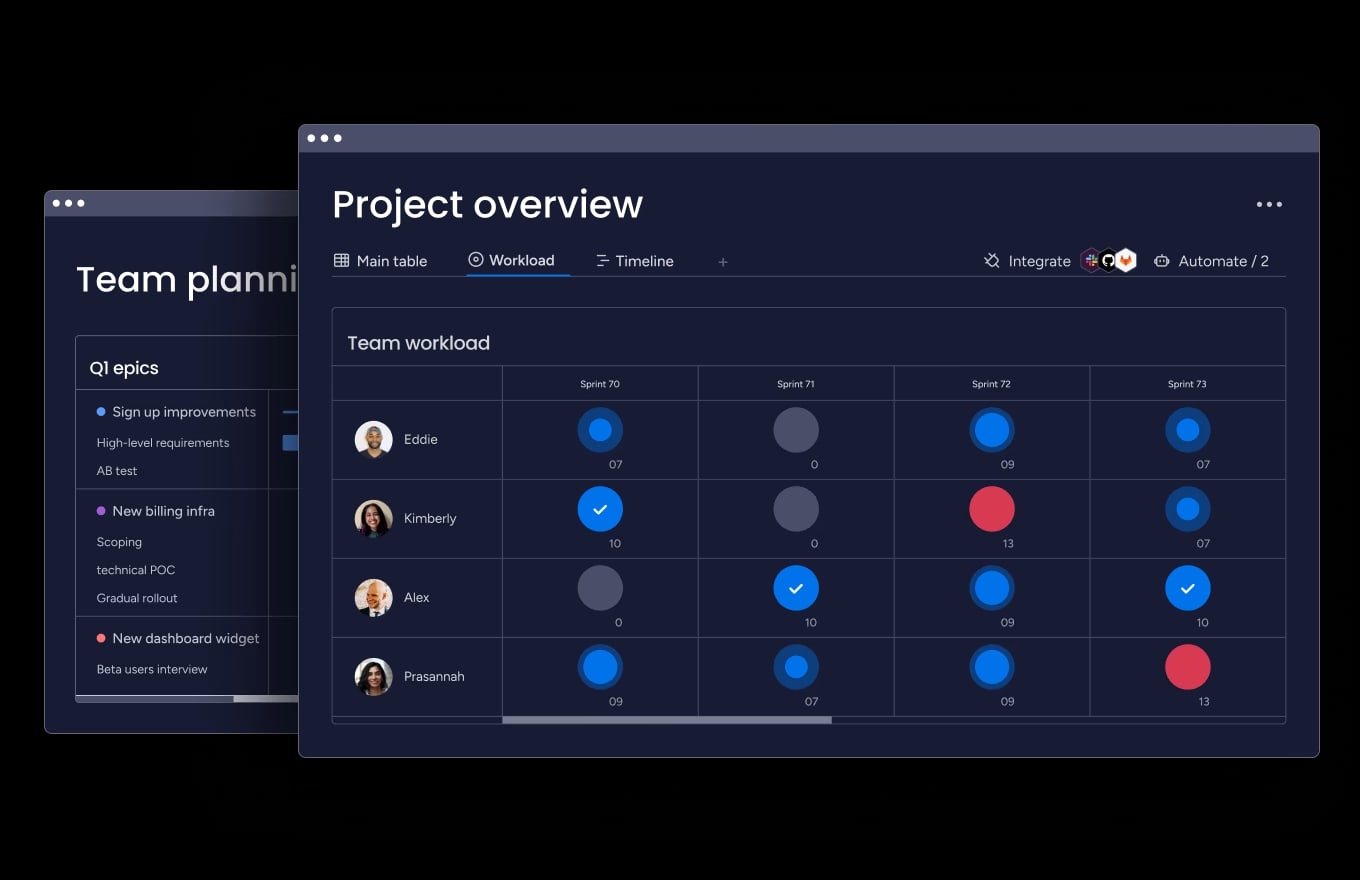
What are Scrum and Waterfall methodologies?
When people talk about Scrum vs Waterfall they’re comparing two very different ways of managing projects. Waterfall takes a structured, step-by-step approach where each stage must be finished before the next one begins. Scrum, on the other hand, breaks work into short cycles called sprints, where teams deliver working features regularly and adjust based on feedback.
To see why these approaches matter and when to use each, let’s look more closely at how Waterfall is structured, how Scrum operates, and how Agile principles connect to the Scrum framework.
Understanding Waterfall methodology
Waterfall is a sequential project management approach where work flows downward through distinct phases — like water cascading down a Waterfall. Each phase must finish completely before the next one starts.
This methodology is defined by its rigid, sequential structure, where progress flows in one direction. Understanding these distinct phases is key to grasping why it works for certain projects. The five phases always follow the same order:
- Requirements: define all project specifications upfront.
- Design: create detailed technical blueprints.
- Implementation: build the actual product.
- Testing: verify everything works correctly.
- Deployment: release the finished product.
Think of building a house — you can’t install the roof before laying the foundation. Waterfall works the same way, with extensive documentation and planning before any actual building begins.
Understanding Scrum framework
Scrum is an Agile framework that breaks work into short iterations called sprints. Teams deliver working features every one to four weeks instead of waiting months for a complete product.
Small, cross-functional teams work together throughout each Scrum sprint. They hold daily meetings to coordinate, plan sprints together, and review their work regularly. This constant collaboration keeps everyone aligned and moving forward.
The framework includes specific roles and ceremonies that structure the work:
- Product Owner: defines what to build.
- Scrum Master: facilitates the process.
- Development Team: builds the product.
- Daily stand-ups: quick coordination meetings.
- Sprint reviews: demonstrate completed work.
- Retrospectives: improve team processes.
How Agile relates to Scrum
Agile is the philosophy — Scrum is one way to practice it. The Agile Manifesto values working software over comprehensive documentation and responding to change over following a plan. For those comparing Agile vs Scrum, remember that Scrum is simply an Agile framework that implements these core principles.
Scrum puts these values into action through its specific practices. Where Agile says “collaborate with customers,” Scrum creates sprint reviews for regular feedback. Where Agile promotes adapting to change, Scrum builds in flexibility through short iterations.
Key differences between Scrum and Waterfall
Scrum and Waterfall may both guide product development, but the way they structure work couldn’t be more different. These differences show up in how teams plan, respond to change, deliver results, and involve customers. Understanding the contrasts is essential for choosing the approach that best supports your project.
The table below highlights the most important distinctions between Scrum and Waterfall so you can see, at a glance, how each methodology shapes the development process.
| Aspect | Waterfall | Scrum |
|---|---|---|
| Planning approach | Detailed upfront planning | Adaptive planning each sprint |
| Change handling | Expensive and difficult | Built into the process |
| Delivery timeline | One final delivery | Incremental deliveries |
| Team structure | Specialized roles by phase | Cross-functional teams |
| Customer involvement | Beginning and end only | Throughout the project |
| Risk discovery | Late in the process | Early and often |
Planning and deliverables
Waterfall requires you to know everything upfront. Teams spend weeks or months gathering requirements, creating specifications, and planning every detail before writing any code.
Scrum embraces uncertainty. You plan just enough for the next sprint, then adjust based on what you learn: this flexibility lets teams respond to new information without derailing the entire project.
Team structure and roles
Waterfall divides work by specialty. Business analysts gather requirements, architects design systems, developers code, and testers validate — each group hands off work to the next.
A Scrum team includes all these skills in one group. Everyone works together throughout each sprint, eliminating handoffs and delays. monday dev supports this collaboration with a Scrum board and real-time updates that keep cross-functional teams in sync.
Flexibility and change management
Changing requirements in Waterfall means revisiting earlier phases. You might need to update designs, revise documentation, and adjust timelines — all requiring formal approval processes.
Scrum expects change. Each sprint is an opportunity to adjust priorities based on feedback. Teams can pivot quickly without disrupting the overall framework.
Feedback and iteration cycles
Waterfall projects often go months without user feedback. Teams might build exactly what was specified, only to discover it’s not what users actually need.
Scrum delivers working software every sprint, creating regular opportunities for feedback. Users can try features early and suggest improvements while there’s still time to make changes.
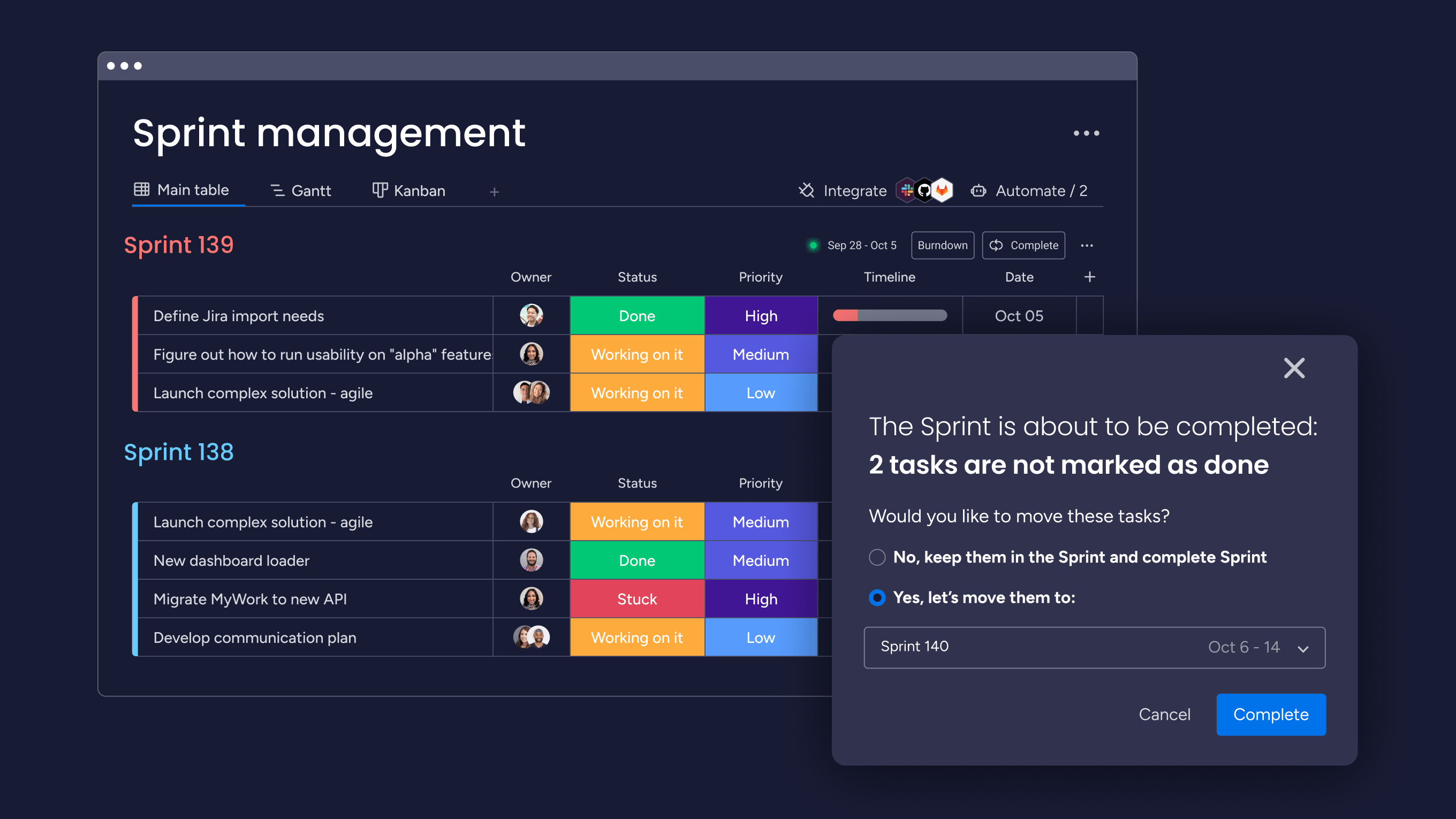
When to use Waterfall methodology
Waterfall is most effective when projects demand structure, predictability, and clear documentation. Because each stage must be completed before the next begins, it’s a natural fit for environments where requirements are fixed, processes are tightly regulated, or tasks have strict dependencies. In these situations, the methodology provides confidence that nothing is missed and progress moves forward in an orderly way.
The sections below highlight the types of projects and industries where Waterfall is most valuable.
Projects with fixed requirements
Waterfall is a strong fit when project specifications are clear from the start and unlikely to change. Examples include:
- Infrastructure upgrades: requirements are defined upfront and work must follow a set order.
- Hardware manufacturing: designs and specifications are locked in before production begins.
- Compliance projects: deliverables must meet strict, predefined standards.
These types of projects benefit from:
- Thorough documentation that ensures every requirement is captured.
- Careful sequencing that reduces the risk of costly rework.
- Accurate estimates for costs and timelines since requirements remain stable.
Regulated industries and compliance
Healthcare, finance, and government projects often require extensive documentation and approval processes. Waterfall naturally provides the audit trails and phase gates these industries demand.
Regulatory bodies expect to see comprehensive plans, design documents, and test results. Waterfall’s emphasis on documentation satisfies these requirements while maintaining clear accountability.
Clear sequential dependencies
Some work must happen in a specific order. You can’t pour concrete before digging the foundation. Hardware projects can’t begin manufacturing before finalizing designs.
Waterfall’s sequential phases ensure each piece is solid before building the next. This prevents expensive rework when physical constraints dictate the order of operations.
When to use Scrum methodology
Scrum thrives in environments where learning and adaptation drive success. It’s ideal when you need to discover the best solution through experimentation and feedback.
Complex and evolving projects
Software development, new product creation, and innovation projects rarely have clear paths from start to finish. Requirements emerge as teams learn more about user needs and technical possibilities.
Scrum’s iterative approach lets teams explore solutions without committing to a single path too early. monday dev enhances this flexibility with customizable workflows that evolve alongside your understanding of the problem.
Cross-functional team collaboration
Projects requiring diverse skills benefit from Scrum’s integrated team approach. Instead of waiting for handoffs between departments, everyone works together toward shared sprint goals.
This collaboration accelerates decision-making and problem-solving. When designers, developers, and product managers work side-by-side, they resolve questions immediately rather than through lengthy email chains.
Rapid market response needs
Fast-moving markets demand quick adaptation. Scrum’s short cycles let you release features quickly, gather feedback, and adjust course based on real user behavior.
Teams can test ideas with minimal investment, then double down on what works. This rapid experimentation provides competitive advantages in industries where speed matters.
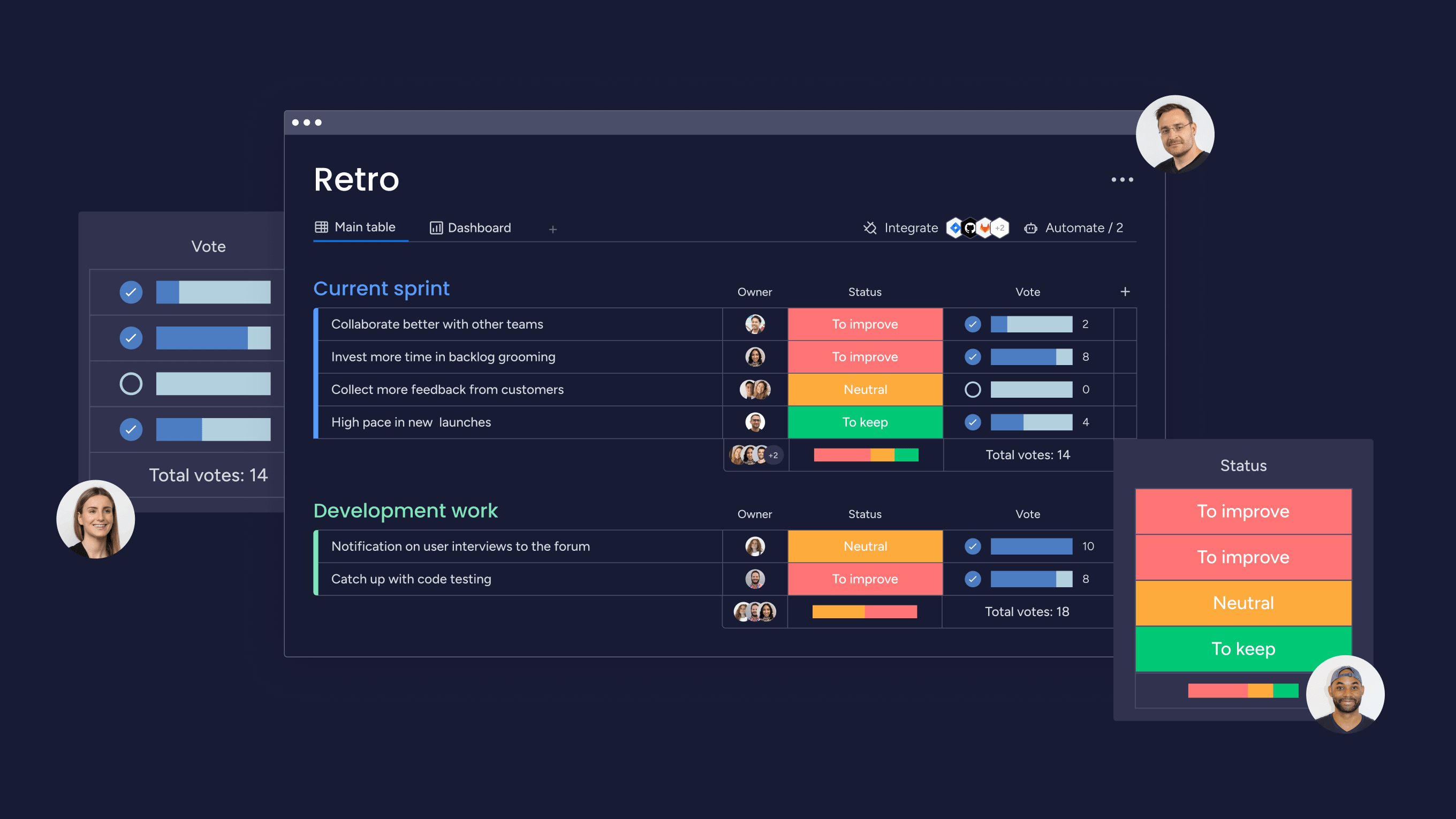
Advantages of Scrum compared to Waterfall
Scrum addresses many of the challenges that traditional, sequential planning often creates. The pillars of Scrum (transparency, inspection, and adaptation) gives teams a way to adjust quickly, involve stakeholders throughout the process, and deliver working features at a steady pace. This flexibility is what makes Scrum extra valuable in modern product development, where change is constant and early feedback can make or break success.
Below, we’ll look at the key advantages Scrum offers over Waterfall and how they translate into better outcomes for teams and organizations.
Higher success rates for complex projects
Scrum reduces failure risk by validating assumptions early and often. According to a 2023 study in the Information Systems Frontiers journal, Agile projects have a failure rate of 10%, compared to 30% for Waterfall projects, because teams can identify issues within weeks instead of after months of work.
Regular demonstrations keep stakeholders engaged and aligned. Teams can track Scrum metrics to measure velocity and ensure consistent delivery. They see progress continuously rather than waiting for a big reveal that might miss the mark. monday dev amplifies this transparency with dashboards that show real-time progress across all active sprints.
Faster time to value
Scrum delivers working features within the first few sprints, so organizations don’t need to wait months to see results. Each release creates opportunities to:
- Generate early revenue by putting usable features in customers’ hands.
- Gather real feedback to validate assumptions and refine priorities.
- Reduce financial risk by delivering completed value instead of half-finished components.
Enhanced team adaptability
Scrum builds resilience by encouraging constant learning and adjustment. Through regular retrospectives and short iteration cycles, teams can:
- Identify what works and what doesn’t before small issues grow.
- Continuously improve processes, communication, and delivery.
- Stay effective in uncertainty, becoming stronger with every project they complete.
Continuous stakeholder alignment
Sprint reviews create regular touchpoints with stakeholders. They stay informed about progress, provide feedback on priorities, and see their input incorporated quickly.
This ongoing involvement prevents the disconnect that often occurs in long Waterfall projects. Stakeholders feel heard and teams build the right solutions.
Benefits of Waterfall in specific scenarios
While Waterfall isn’t as flexible as iterative approaches, it shines in situations where structure, predictability, and documentation are critical. In industries with strict requirements or projects that demand careful sequencing, its strengths become clear. Recognizing these benefits makes it easier to see when Waterfall is the right choice for your team or organization.
Predictable budget and timeline
Waterfall’s comprehensive planning enables accurate cost and schedule estimates. When requirements are stable, teams can confidently predict delivery dates and resource needs.
This predictability helps organizations plan budgets, coordinate dependencies, and meet regulatory deadlines. Fixed-price contracts often require the certainty Waterfall provides.
Comprehensive documentation
Detailed specifications, design documents, and test plans create valuable references for future work. Teams maintaining complex systems need this documentation to understand decisions and dependencies.
Industries with high turnover or outsourced maintenance particularly benefit from thorough documentation. New team members can understand the system without relying on tribal knowledge.
Structured phase gates
Formal approval points ensure work meets standards before proceeding. Large organizations with established governance processes appreciate these clear checkpoints.
Phase gates also provide natural points for go/no-go decisions. If priorities shift or budgets change, organizations can stop cleanly rather than abandoning work mid-sprint.
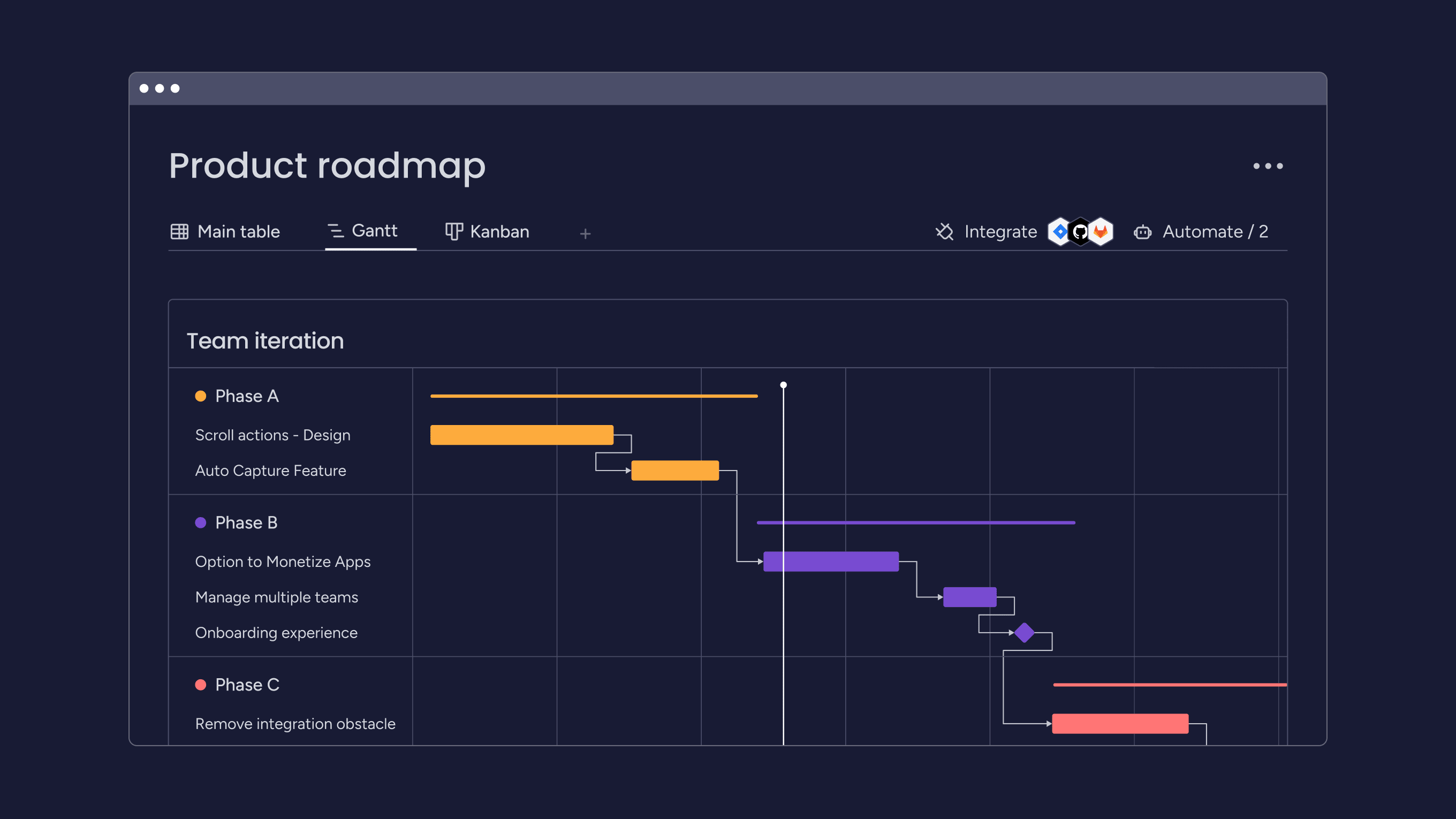
How to combine Scrum and Waterfall successfully
Many organizations find pure methodologies too rigid for their needs. In fact, according to a Smartsheet report, a survey of 1,400 project management professionals found that hybrid project management is now the most popular approach, with 42% of organizations using it to blend the strengths of different frameworks to match specific contexts. Some teams even adopt Scrumban, which fuses Scrum’s iterative approach with Kanban’s continuous flow.
Understanding hybrid approaches
Hybrid models recognize that different project phases benefit from different approaches. Initial planning might need Waterfall’s structure while development benefits from Scrum’s flexibility.
“Water-Scrum-Fall” is one common pattern — Waterfall for requirements and architecture, Scrum for development, then Waterfall again for deployment and maintenance. This acknowledges that some phases need more structure than others.
When hybrid works best
Large enterprises often have governance requirements that conflict with pure Scrum. Hybrid approaches let them maintain necessary controls while enabling team agility.
Projects with fixed external dependencies but flexible internal development also benefit from hybrid models. monday dev supports these mixed approaches with workflows that accommodate both structured phases and iterative development.
How to implement a hybrid methodology in 3 steps
Creating an effective hybrid approach requires careful consideration of your specific constraints and goals.
Step 1: assess organizational constraints
Identify which aspects of your current process must remain. Consider governance requirements, team skills, and stakeholder expectations.
Step 2: design the hybrid framework
Map out which phases will use which methodology. Define clear transitions between approaches and ensure everyone understands when the rules change.
Step 3: pilot and iterate
Test your hybrid approach on a small project first. Gather feedback from all participants and refine before rolling out more broadly.
How to choose between Scrum and Waterfall
In Agile project management, picking the right methodology is less about which one is “better” and more about which one fits your situation. The right choice depends on the complexity of the work, the skills and preferences of your team, and the culture of your organization. It also comes down to how much involvement you can expect from stakeholders along the way.
The sections below outline the key factors to weigh when deciding between Scrum and Waterfall so you can choose an approach that gives your project the best chance of success.
Assessing your project complexity
High complexity with uncertain requirements points toward Scrum. When you’re exploring new territory or user needs aren’t clear, iterative development reduces risk.
Low complexity with well-understood requirements suits Waterfall. If you’ve built similar systems before and requirements are stable, comprehensive planning makes sense.
Evaluating team capabilities
Scrum demands self-organizing teams comfortable with ambiguity, a key capability when you consider that only 23% of individual contributors believe change is managed ‘very well’, highlighting a common disconnect with leadership. Team members need strong collaboration skills and willingness to work outside their specialties.
Waterfall accommodates specialized roles and clear hierarchies. If your team prefers defined responsibilities and structured handoffs, Waterfall might align better with their working style.
Considering organizational culture
Your organization’s decision-making style affects methodology success. Hierarchical cultures with formal approval processes often struggle with Scrum’s distributed authority.
Innovative cultures that encourage experimentation typically embrace Scrum more easily. They’re comfortable with the uncertainty and rapid change Scrum requires.
Analyzing stakeholder expectations
Scrum needs engaged stakeholders who can attend sprint reviews and provide regular feedback. If your stakeholders have limited availability, Waterfall’s upfront requirements gathering might work better.
Consider how stakeholders prefer to engage — some want continuous involvement while others prefer to set requirements and check back at completion.
Why modern development teams need flexible platforms
Modern development teams face a unique mix of challenges: they’re often distributed across locations, need constant collaboration to stay aligned, and rarely stick to a single methodology. To stay effective, they need platforms that support remote and hybrid work, enable real-time visibility, and scale easily across multiple projects.
Supporting remote and hybrid teams
Distributed teams require real-time visibility regardless of methodology choice, a need that is especially critical in large organizations where research shows only 61% of employees in large enterprises are satisfied with transparency. Whether running daily stand-ups or phase gate reviews, everyone needs access to current information.
Effective platforms provide this transparency without creating overhead. Teams can focus on delivery rather than status reporting.
Enabling real-time collaboration
Both methodologies benefit from seamless communication and shared understanding. Teams need to coordinate work, share documents, and track progress without friction.
The right platform integrates naturally into existing workflows. It enhances collaboration without adding complexity or slowing teams down.
Scaling across multiple projects
Organizations rarely use just one methodology. Different projects have different needs, and teams should choose the approach that fits best.
Platforms must accommodate this diversity while providing portfolio-level visibility. Leadership needs to see progress across all projects regardless of methodology.
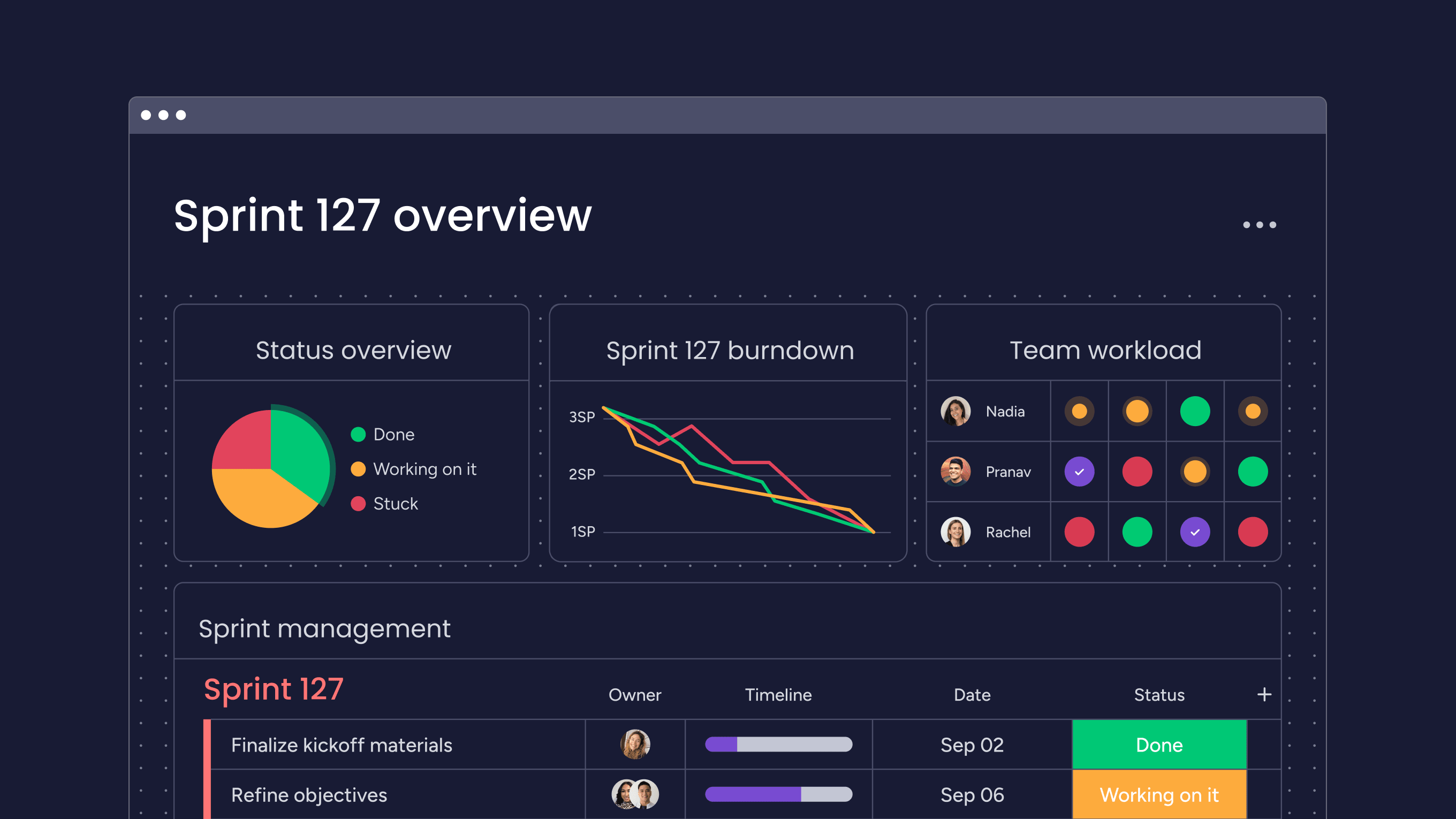
Transform your development process with monday dev
Modern product teams need tools that adapt to their way of working, support different methodologies, and make progress visible across every project. Built with this flexibility in mind, monday dev helps teams create workflows that fit their needs while maintaining the alignment and transparency required to move quickly.
By combining adaptability with visibility, the platform connects engineering and business teams, streamlines collaboration, and gives leaders clarity without disrupting how developers prefer to work.
Customize workflows for any methodology
Create boards that support sprint planning, backlog management, or Waterfall phases. Build the exact workflow your team needs:
- Flexible structures: design boards with custom fields, statuses, and priorities tailored to Scrum or Waterfall processes.
- Custom automations: set up sprint transitions, notify stakeholders of phase completions, and automate status updates when code is merged.
- Multiple views: toggle between Kanban for daily work, Gantt for release planning, and timeline for roadmap visualization (all from the same dataset).
Bridge engineering and business teams
Keep technical and business teams aligned regardless of methodology. monday dev provides transparency without disrupting how teams prefer to work.
Real-time updates ensure everyone stays informed. Stakeholders track progress through customizable dashboards with burndown charts, velocity metrics, and delivery forecasts without disrupting development flow.
Maintain visibility without micromanaging
Dashboards automatically capture progress data from your teams’ natural workflow. Leaders get the insights they need while teams maintain autonomy.
Integration with GitHub, GitLab, and Bitbucket syncs code activity directly to your boards, while Jira and Azure DevOps connectors ensure seamless transitions for teams adopting monday dev. This connected ecosystem enables informed decisions without constant check-ins, keeping teams productive while stakeholders remain confident.
Frequently asked questions
What is the 3 5 3 rule in Scrum?
The 3 5 3 rule in Scrum refers to three roles (Product Owner, Scrum Master, Development Team), five events (Sprint, Sprint Planning, Daily Scrum, Sprint Review, Sprint Retrospective), and three artifacts (Product Backlog, Sprint Backlog, Increment).
What is the difference between sprints and Waterfall phases?
Sprints are short, iterative cycles (one to four weeks) that deliver working software incrementally, while Waterfall phases are sequential stages that must be completed entirely before moving to the next phase.
What is the main difference between Waterfall and Agile methodologies?
If you’re considering Agile vs Waterfall, the main difference is that Waterfall follows a linear, sequential approach with fixed requirements. On the other hand, Agile embraces iterative development with changing requirements and continuous stakeholder feedback.
How long does it take to transition from Waterfall to Scrum?
Transitioning from Waterfall to Scrum typically takes three to six months for teams to become comfortable with new processes, though full organizational transformation can take one, or even two, years depending on company size and culture.
Can you run Scrum and Waterfall projects simultaneously in one organization?
Yes, organizations can run Scrum and Waterfall projects simultaneously by choosing the methodology that best fits each project's requirements, team capabilities, and stakeholder needs.
Which methodology delivers faster return on investment?
Scrum typically delivers faster return on investment through incremental value delivery throughout the project, while Waterfall delivers ROI only after project completion, making Scrum more advantageous for most software development projects.
 Get started
Get started 


